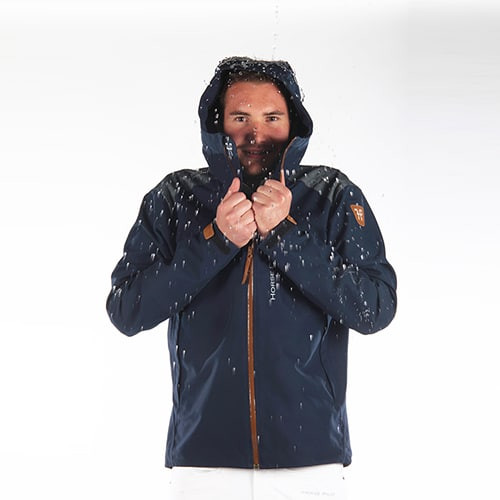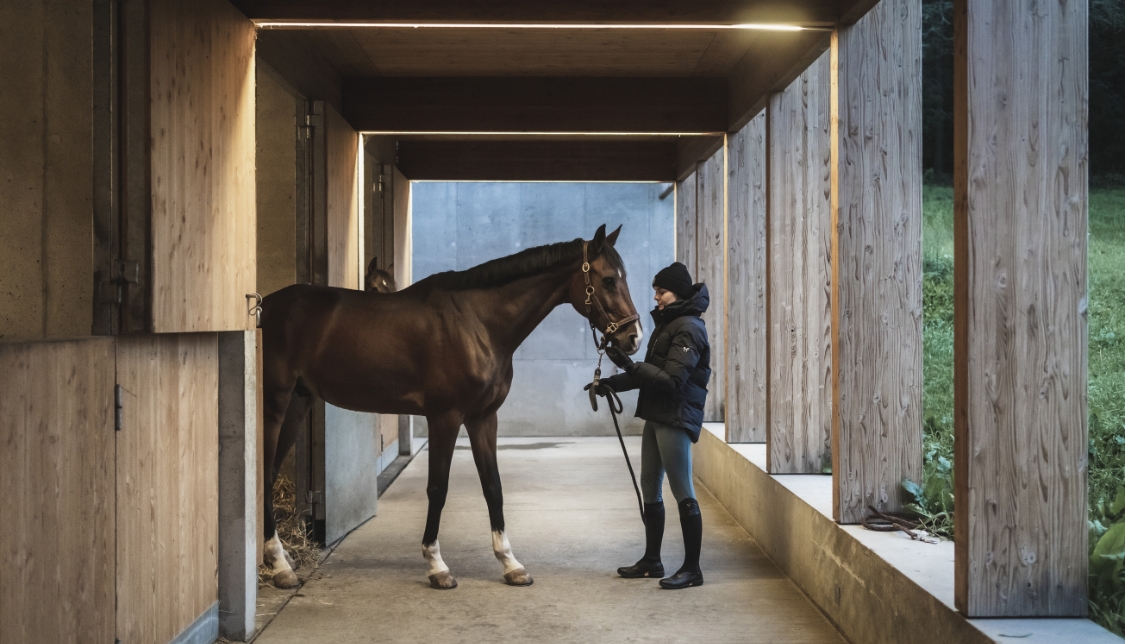Discover our technical advice to face winter

HORSE RIDING IN WINTER: THE 2.0 OUTFIT
Rain, snow, wind, cold…sometimes you just look outside and your desire to ride a horse fades away. And you can only blame your equipment!
In few lines, you will learn two golden rules so you can be ready to cope with the cold all winter long and motivate you no matter what.
RULE No 1: YOU DON’T WANT TO BE DRESSED LIKE A SCARECROW? THAT IS GOOD NEWS.
When it is cold, we tend to wrap up warmly even if we look like the Michelin Man. However, thickness and heat are not synonymous. One of the secrets to avoid catching a cold is to prevent draughts from touching your skin.
To do so, choose skin-tight, fitted and pre-shaped clothes.
With a skin-tight cut, you will have both a real modern and athletic style and will avoid useless draughts, which can cause goose bump even should you ride with your sleeping bag put on.
RULE No 2: EMBRACE THE 3-LAYER PHILOSPHY
Each rider – no matter how good he is – passes through various steps: preparation, warmup, long and/or intense effort, recovery, rest and horse care.
To perform well, the 2.0 outfit of any proper rider must meet these simple objectives:
● To keep you dry
● To maintain a comfy body temperature, at each stage
In practice, it is slightly more complicated because the outfit must be both warm and waterproof and let the body thermoregulate itself. It means that it must enable to sweat freely without causing a “sauna” effect. So, pay attention because the danger is not only outside, it also comes from the inside.
The 3-layer approach is a very efficient weapon to cope with athletes’ constraints.
Having three layers means having three different thicknesses separated by air. Each layer plays a significant role and gathers its efforts with the air to perfectly protect the body in any weather and in all circumstances.
FIRST LAYER
Objective: wick moisture to the upper layers to keep you dry. So better opt for hydrophobic fabrics (polycotton, polypropylene, polyester, etc.).
Choose fabrics treated with anti-microbial and anti-odour methods (silver ions or polygiene).
SECOND LAYER
Objective: store the body heat while wicking moisture (thermoregulation). The thermal efficiency of this layer can vary according to weather conditions.
Choose breathable fabrics that can keep their insulating capacity even if they’re wet (mix of fluff, feathers, polyester, merinos’ wool, etc.). Avoid cotton or other fabrics that soak water up.
THIRD LAYER
This layer is probably the most technical regarding the construction.
Objective: repel water and wind by wicking the moisture from the lower layers.
The fabric and its manufacturing are essential.
The fabric must be highly resistant to liquid water (waterproof) and at the same time must wick water vapour (breathability).
We talk here about waterproof breathable fabrics which performances are measured with Schmerber tool for waterproofness and with WVTR (Water Vapor Transmission Rate) for breathability*.
The manufacturing is also crucial: the way the seams, yokes and pockets are treated will make the fabric waterproof or not. For an optimal protection, opt for a third layer with waterproof seams, zips and pockets, with an adaptable and covering hood.
* To be well protected on the outside, choose a fabric with at least 6.000 Schmerber / 6.000 WVTR and even better, membranes of 15.000 Schmerber / 15.000 MVTR if you ride several horses a day or if you are planning to go on a long ride.
TO SUM UP:
● From the first to the third layer, choose fitted, skin-tight and pre-shaped clothes.
● Avoid fabrics that soak water up (ex: cotton)
● 1st layer: wicks moisture
● 2nd layer: wicks moisture and fosters thermal insulation
● 3rd layer: protects the outside – waterproof and breathable fabric (be careful to choose quality and well-manufactured clothes).
Be well equipped has a cost but take it as a long-term investment that will prevent you, this winter, from counting the minutes separating you from a warm bath at home.
Fully protected, now you know everything to step into the stirrup even in winter.
Now let’s ride for real!


